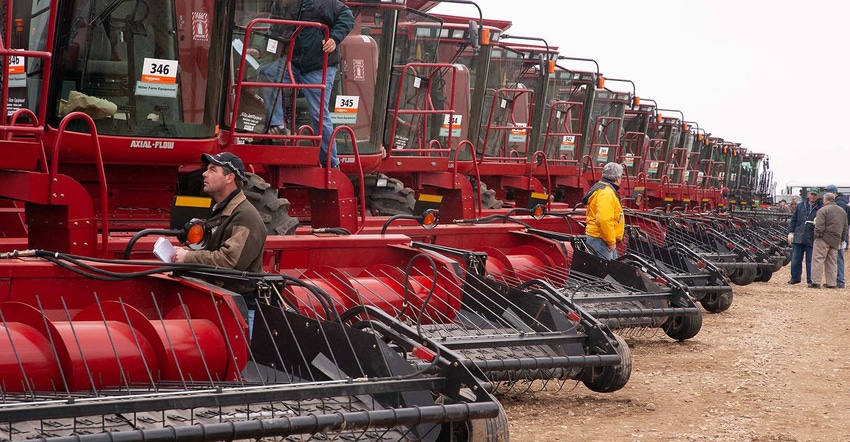
If you have a late model combine for sale, you may get as much for it as the price you paid years ago. But if you’re looking to buy, don’t hold your breath on making a quick purchase.
Supply chain issues continue to wreak havoc on harvest equipment supply and demand. As a result the supply of late model combines, swathers and headers available for sale is shrinking, says Jordan Clarke, Vice President of sales for Canada Prairies at Ritchie Bros., the leading North American equipment auction company.
“We’ve seen a decrease in the number of combine units we’ve been able to sell in the prime harvest months of July and June, year over year, which gives a snapshot of where the overall market is,” he says.
In 2020 Ritchie Bros. sold 1,038 combines/swathers/headers; the number fell to 832 in 2021, and just 767 through 2022 a decline of almost 300 units over three years.
One of Ritchie Bros. largest harvest equipment auctions takes place in Saskatoon in July. They sold over 100 combines in 2019 and 2020, over 80 in 2021, but just 50 combines at the sale this July.
“That gives you an idea of where the supply is at,” says Clarke. “We’ve heard over the next 6 to 12 months that OEMs are going to slowly catch up, but right now we’re still hearing about delays, which in turn puts more demand than anything on the marketplace. I don’t know if we’ve seen a bottom yet."
“We’re hearing stories from customers and dealers about deliveries that were going to land for July wheat harvest 2022, now delayed to fall ‘22 or later,” he adds.
High prices
The shortage and robust demand continues to boost late model machine prices, which have stayed relatively the same or increased in most equipment categories. Prices still vary somewhat based on manufacturer, regional demand, and hours.
“We’re seeing some of the strongest prices -- 10 to 15% higher -- in machines two years old or newer,” says Clarke. “Even for units older than that, prices really haven’t dropped much. We’re seeing pricing on combines sold this year that are the same price as similar machines we sold two years ago.”
Farm strategy
If you want to upgrade, have the resources, and the right machine comes up for sale, you might get lucky. But in general most farmers who want to make significant equipment upgrades will need to plan and commit well in advance – as much as two years in some cases.
“The market has switched and is currently in favor of the manufacturer,” says Clarke. “The days of driving to a dealer lot or making an order and getting the machine the next week, are long gone."
“A lot of customers have the money to spend and want to upgrade and are told ‘you can’t get it,’” he concludes. “You may have to put money down now and agree to an unknown delivery date. And that could be a year from now.”
About the Author(s)
You May Also Like






